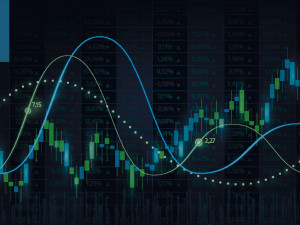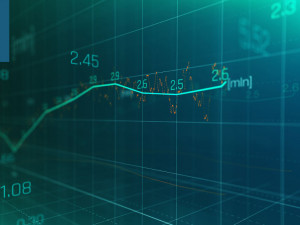
UK introduces post-Brexit rules
Morning mid-market rates – The majors
30th June: Highlights
- UK Debt to GDP at 99%
- End of Q2 heralds end of Pandemic in Major economies
- Odds still against ECB being first to taper
Sterling pressured by stronger dollar
The EU’s state aid rules are being removed along with several other statutes in a move that it is hoped will make dealings between industry and the Government more efficient and less bureaucratic.
State subsidies were a major bone of contention during the final stages of the Brexit process, with the EU demanding the UK follow Brussels’ guidelines. In the end, there will be no statutory oversight, merely a committee that will advise on whether any state subsidy is fair.
This will, to a certain extent, allay Brussels’ fears over how the UK will try to force its way into the global economy as an independent nation.
As the country begins to believe in the reality of returning to life without restrictions, households are also looking to the future, with consumer borrowing showing its first increase in eight months in May. Net lending rose from £2.8 billion in April to 6.9 billion in May.
House price increases also continue to rise, increasing YoY by 13.4% in June following May’s 10.9% increase.
New Health Minister Sajid Javid continues to insist that the restrictions have to end on July 19th.
While optimism is still very high, the belief that the beginning of the removal of support could be more than a bump in the road, is holding back business investment.
Concerns about businesses that are not viable without support could see several go to the wall, raising the spectre of bad debts for banks and business credit agencies.
The pound is struggling to compete with a well-supported dollar as traders look forward to this week’s data.
Yesterday, Sterling fell to a low of 1.3814, closing at 1.3836. It should be well-supported around the 1.3800 level, but a sustained break of that level could see the long-term support at 1.3670 tested.
Considering your next transfer? Log in to compare live quotes today.
Q3 likely to see highs for both GDP and Inflation
Wael Kashkari, the President of the Minneapolis Fed, still believes that the economy is in a deep hole. He wants the FOMC to continue to provide support, so it can be assumed that he won’t be voting for tapering any time soon.
President Biden has largely stayed out of the daily debate over the economy, preferring, as a President should, to look at the bigger picture. He is currently touring the country promoting a further $1.2 trillion in infrastructure investment and support that he is currently trying to pass through congress.
It seems that legislators are not fundamentally opposed to efforts to rebuild the country but are against any form of support that is indiscriminate. That is to say support being handed out without regard to its necessity.
This month, consumer confidence rose to its highest level since the Pandemic began. While that is hardly a surprise given the fact that, on the surface, the economy is rapidly returning to normal, there are still pockets of concern.
The survey shows that consumers are most optimistic about their own finances improving; this is mostly due to rising existing home sales, and job openings. This week’s NFP data will test that confidence.
With jobless claims continuing to fall there is every possibility that this month will see another surge in NFP but, longer-term as Autumn turns to winter there are worries that the third quarter will be the peak in both GDP and inflation and that is what concerns Jerome Powell the most.
The latest estimate for the NFP number is for 690k new jobs to have been created. That seems a little high, and the market is likely to accept anything over 600k as positive,
The dollar continues to outperform. Yesterday, the index rose to a high of 92.19, closing at 91.09.
Re openings drive consumers back to shops
Data for economic sentiment was released yesterday, and it showed the second-highest increase since records began in 1985. Last month was only surpassed by the dot.com boom of mid-2000.
While this kind of news makes headlines, it masks the reality of an economy that even when back at pre-Covid levels will still be struggling.
It is like the economy fell down a deep hole but having struggled to climb out, finds the same depressing landscape.
The way the Pandemic has been dealt with economically has been different in each of the G7 economies, the issues they each faced going into Covid were also vastly different.
The UK was dealing with a new Government and looking forward to being able to utilize its huge majority to push through post-Brexit policies. The U.S. was struggling with a President like no other and making efforts to come to terms with trade with China.
The Eurozone has structural issues that go way beyond the Pandemic. The fact that the Bundesbank president can call on the ECB to begin to taper its support for the economy despite the fact that growth in the region will be the lowest in G7 this year is an indicator that Germany sees business as usual once the Pandemic is finally beaten.
There is a lot of talk about a more Federal Europe. That is supported by French President Emmanuel Macron and to a lesser extent by Angela Merkel, although her influence is waning.
The incoming German Chancellor will hold the power to make that happen. It depends on what Germany expects from the region once the economy begins to return to normal. One thing the Eurozone cannot afford to do is congratulate itself on surviving the Pandemic and think it can return to normal. This is a situation where the status quo is, in reality, a backward step.
It is becoming impossible to describe the single currency as anything other than the dollar’s shadow. Yesterday, it fell to a low of 1.1877, closing at 1.1877. Technically, it is looking a little fragile. A break of support at 1.1840 may open up a return to the year’ lows around 1.1710.

About Alan Hill
Alan has been involved in the FX market for more than 25 years and brings a wealth of experience to his content. His knowledge has been gained while trading through some of the most volatile periods of recent history. His commentary relies on an understanding of past events and how they will affect future market performance.”



